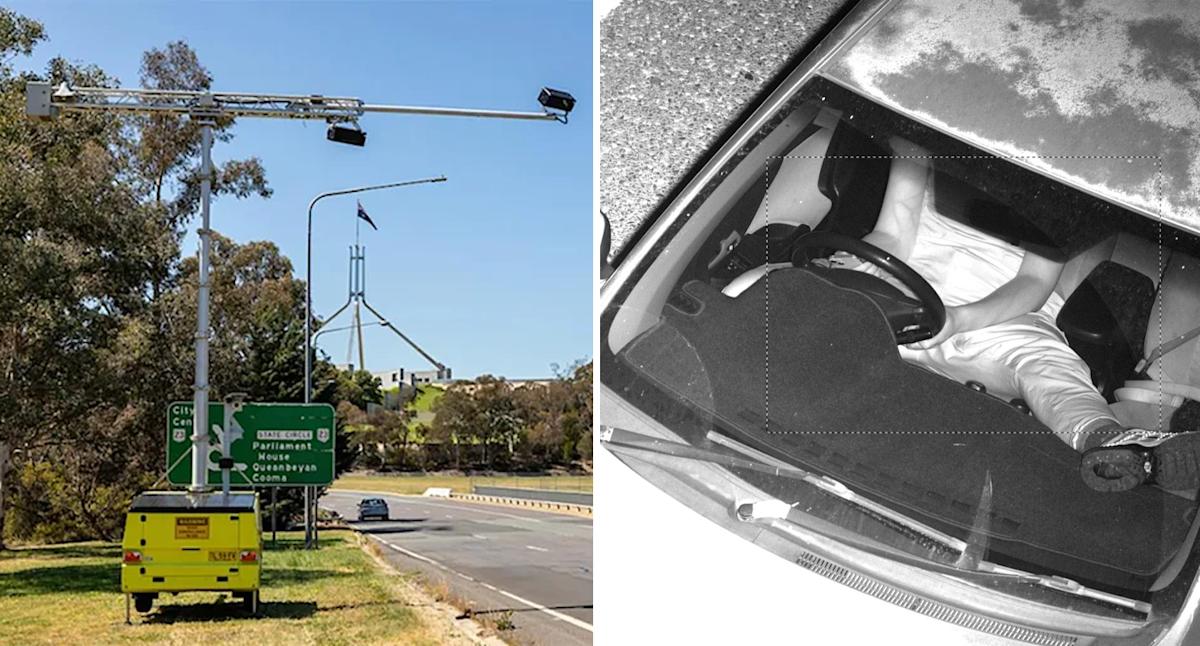New “smart” road cameras which detect mobile and seatbelt offences are popping up across the country as authorities attempt to lower the ever-increasing Australian road death toll.
The AI-powered safety cameras have been quickly embraced by Australian state governments and are now being used across the world. But they do little to protect groups of road users who are sadly overrepresented in deaths, one road safety researcher has argued.
RMIT’s road safety professor, Nirajan Shiwakoti, told Yahoo News while the changes “represent progress”, it is “not the solution for everything”. He said authorities face an uphill battle building trust with communities when it comes to the use of the data — and what happens to the revenue raised.
Minister’s ‘astounding’ claim about mobile and seatbelt detection cameras
The new cameras target drivers caught breaking the law with their mobile phones and seatbelts with eye-opening results.
While they have been in place in NSW and Victoria for some time, Western Australia was the latest state to adopt the technology in January this year. Drivers are yet to be fined for offences, but the trial period has produced “astounding” results.
It was revealed at a WA Budget Estimates hearing earlier this week that the cameras had captured a mind-blowing 130,000 offences, with nearly 50,000 caution letters issued to those in breach of the road rules since the cameras were rolled out.
Police Minister Reece Whitby said that while he doesn’t want to be involved in “massive revenue raising”, if behaviour doesn’t change, “we are going to see revenue roll in like we’ve never seen it before, and I’ll be gladly spending it on more safety measures.”
Shiwakoti said there is a risk that if the use of the technology is not communicated properly, it may “lead people to feel” that mass surveillance is taking place, or there “might be misuse of personal data”.
The legitimacy of the technology has been questioned by road users, with dozens, possibly hundreds of drivers coming forward this year to challenge their penalties — with some successfully overturning their fines.
Last July, one NSW driver had his $410 fine and 10 demerit points dropped after he submitted an appeal. He claimed the item caught in his hand by a roadside camera could have been a number of things, not just a phone.
In November, another driver in the state shared their frustration at receiving a seatbelt fine, arguing the grainy and unclear photos supplied by authorities failed to show proof of the apparent act.
“The challenge for transport authorities is being transparent with the benefits of this technology,” Shiwakoti said.
“They must provide assurance to the community that there won’t be any misuse, that this sort of technology is there to save lives rather than revenue raising and back this up with evidence,” he said.
He’d like to see authorities communicate evidence of how the cameras are deployed and trends in mobile phone and seatbelt misuse.
“That will hopefully provide trust to the community,” he said, pointing out they are “there to save lives not just for fines.”
Vulnerable road users still at risk on Aussie roads
The “smart cameras” are primarily on highways and motorways near metropolitan areas. But Shiwakoti argues it ignores the most vulnerable road users, including pedestrians, cyclists and culturally diverse people — particularly those in remote areas.
A disproportionate number of crashes involve cyclists on Australian roads despite them being a small percentage of overall road users. Last year, cyclist deaths jumped from 34 in 2023 to 38 in 2024, an 11.8% increase, with motor vehicles involved in the majority of crashes.
He added that indigenous Australians also face disproportionately high road fatalities, particularly in regional areas.
And despite the drawbacks of the technology, Shiwakoti believes we will see these cameras rolled out and expanded to new locations across the country.
“I think it will be expanded,” he said. “You will see in the future it being right across urban and regional areas.”
But he believes a “holistic” approach which considers all road users needs to be adopted. “This technology is just one tool available, but we need to be thinking about a proactive approach,” he said.
Do you have a story tip? Email: newsroomau@yahoonews.com.
You can also follow us on Facebook, Instagram, TikTok, Twitter and YouTube.


